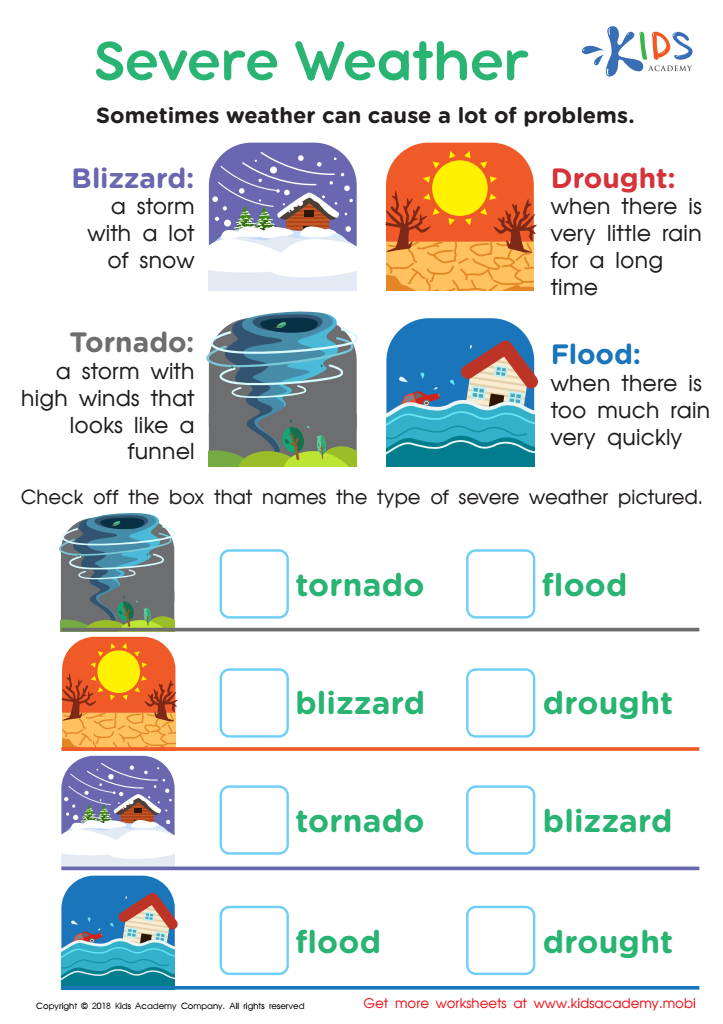Vocabulary Building Normal Weather Worksheets for Ages 3-8
3 filtered results
-
From - To
Welcome to our engaging "Vocabulary Building Normal Weather Worksheets" designed specifically for children aged 3 to 8! These interactive worksheets aim to enhance young learners' understanding of weather concepts while expanding their vocabulary. Through a variety of fun activities like matching, coloring, and labeling, children will explore different weather conditions, learn essential terms, and develop their language skills. Perfect for both homeschooling and classroom settings, our resources make learning about weather exciting and accessible. Encourage your child's curiosity about the world around them while fostering their linguistic abilities with our thoughtfully designed worksheets that cater to early childhood education needs!


Severe Weather Worksheet


Guess the Season Worksheet


What's the Weather Like? Worksheet
Vocabulary building in young children, particularly related to the topic of normal weather, is crucial for their overall language development and cognitive growth. For children ages 3-8, understanding weather vocabulary helps them make sense of their environment and engage meaningfully with the world around them. As children describe and discuss weather conditions, such as sunny, rainy, or windy, they enhance their verbal skills and widen their language repertoire, laying the groundwork for effective communication.
Furthermore, a solid weather vocabulary enriches reading comprehension. When children can readily recognize and understand weather-related terms, they are better equipped to grasp ideas presented in stories or informational texts. This fosters a love for reading and learning.
Additionally, discussing weather helps children make connections to science and critical thinking. By asking questions about how and why weather changes, they develop analytical skills and curiosity.
For parents and teachers, nurturing vocabulary in the context of normal weather also encourages everyday conversations, fostering relationships and promoting interaction. Incorporating weather discussions into daily routines not only enhances vocabulary but also provides opportunities for collaboration in problem-solving and topical discussions, helping to cultivate well-rounded, inquisitive learners.
 Assign to My Students
Assign to My Students



%20(1).jpg)











